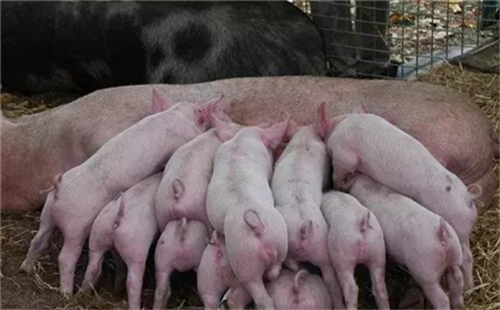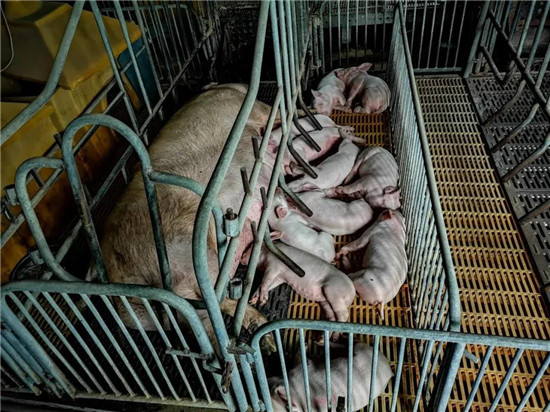The temperature difference between cold and hot in autumn and winter is large, and the multiple occurrence of pig lung disease needs timely prevention and control
Porcine lung disease is an acute and septic infectious disease caused by porcine Pasteurella multocida, which is common to humans and many kinds of animals, and pigs are the most susceptible. The main manifestations are acute septicemia and inflammatory bleeding process, so it is also known as porcine hemorrhagic septicemia. The disease is widely distributed and is often associated with respiratory diseases such as contagious pleuropneumonia. The disease generally has no obvious seasonality, but it is characterized by alternation of hot and cold, changeable climate, high temperature season and sporadic or local epidemic.
Pasteurella multocida is generally considered to be a conditional pathogen that can infect a variety of animals. According to the difference of antigenic components among strains, the bacteria can be divided into several serotypes. Pasteurella multocida of swine type is mainly 5-Pasteurella multocida and 6-Pasteurella vulgaris. The bacteria exists in all tissues, body fluids, secretions and feces of diseased pigs, and in a few cases in the lung lesions of diseased pigs. In some cases, healthy pigs can also carry the bacteria, which can be isolated from the nasal cavity, throat and so on. When the infected pigs are in an adverse environment, such as cold, muggy, humid, fatigue, malnutrition, poor ventilation, long-distance transportation and so on, the body resistance decreases, the pathogen proliferates and occurs.
The resistance of Pasteurella multocida to external environment is not strong. It can survive for 7-8 days in topsoil, 4 days in pig manure at room temperature, 2-4 months in dead pigs in winter, and die quickly in direct sunlight. Commonly used disinfectants can easily kill the bacteria in a few minutes.
Disease characterization
The incubation period of porcine lung disease is 1-5 days, which can be divided into the most acute type, acute type and chronic type according to the course of the disease.
1. The most acute type
The infected pigs had no obvious symptoms and suddenly fell ill and died. It is common in the early stages of the epidemic. The longer course of the disease was characterized by elevated body temperature to 41 ℃-42 ℃, loss of appetite, depression, dyspnea and rapid heartbeat. Visible mucous membrane is purplish red, throat and neck fever, swelling, hard, neck, abdomen and other places skin purple erythema. Sick pigs often sit in a dog posture and make a wheezing sound. Seriously ill pigs have white foam flowing out of their mouths and noses. The condition deteriorates rapidly and eventually suffocates to death. The course of the disease is 1-2 days, and the mortality rate is extremely high.
The characteristic pathological changes of diseased pigs were systemic serosa and subcutaneous tissue bleeding, and a large amount of peptone-like yellowish or gray-cyan cellulosic serous under the neck. The lymph nodes are enlarged, the section is red, pulmonary edema, emphysema and bleeding, and the section is marbled. There are bleeding spots on the epicardium and pericardium, pleural and pericardial effusion, and cellulose. The spleen is bleeding but not enlarged. There are hemorrhagic spots on the skin. Hemorrhagic inflammation of gastrointestinal mucosa. There are bleeding spots or spots in the epicardium and kidney.

two。 Acute type
The most common type. The main symptoms of diseased pigs are pneumonia, body temperature rising to 40 ℃-41 ℃, loss of appetite, dyspnea, foaming from mouth and nose, sometimes with blood, dry short cough at first, and then wet painful cough. Conjunctival cyanosis, erythema appeared on the skin in the later stage, from constipation to diarrhea. With the development of the course of the disease, breathing becomes more difficult, showing a dog sitting posture, weakness in the later stage, lying on the ground can not afford, and finally suffocated to death. The course of the disease was 4-7 days. The acute disease of the pig will eventually become chronic.
Pulmonary interstitial edema widened, foam mucus in trachea and bronchus, serous infiltration between pulmonary lobules, marble appearance of lung section, dark red, grayish yellow and other liver degeneration areas with different colors were found in acute porcine pulmonary disease. Cheese-like necrosis is often found in the center of the liver degeneration area. The pleura is mixed with yellow-white cellulose, and the pleura with a long course of disease adheres to the pericardium.
3. Chronic type
The main manifestations are pneumonia and chronic gastroenteritis, with persistent cough and dyspnea, poor appetite, lethargy, joint swelling and extreme emaciation. Eczema occurs on the skin, followed by diarrhea. The course of the disease is more than 2 weeks. If there is complicated infection or improper treatment, it is more likely to die 2-3 weeks after onset.
Most of the lung tissue of pigs with chronic disease is fleshy, with liver degeneration area and yellow or gray necrotic foci, connective tissue outside, containing caseous substances, and some form cavities and communicate with bronchi. The pleura adheres to the surrounding tissue.
Disease prevention and treatment
1. Prevention
The occurrence of this disease is related to environment and stress. Poor environmental factors, too cold, overheat, dampness, crowding, long-distance transportation of pigs can reduce the resistance of the body, thus inducing the disease. At ordinary times, the feeding and management should be strengthened to improve the environment of the pig house. For imported pigs, they should be isolated for more than one month and rejoin the group after being confirmed to be healthy. For pigs that have been diagnosed with disease, they should be isolated and treated immediately, and the contaminated pig houses should be thoroughly disinfected. Pigs in the same column should be urgently prevented with serum or vaccine.
Vaccination can be given to pigs. EQ-630 attenuated vaccine of porcine lung disease was injected intramuscularly or subcutaneously with 1ml for 6 months. Piglets were immunized once at the age of 40-50 days, and breeder pigs were injected twice a year. Other inactivated vaccine of porcine pulmonary disease, attenuated vaccine of Inner Mongolia strain of porcine pulmonary disease, ta53 live vaccine of porcine pulmonary disease, live vaccine of c20 of porcine pulmonary disease can be used according to specific conditions.
two。 Treatment
Porcine lung disease is an acute septic infectious disease, which is harmful and occurs rapidly. it is not suitable for treatment when the disease is found in large-scale pig farms. It is recommended to eliminate it immediately and disinfect it in time. If treatment is necessary, consider the combination of antibiotics and sulfamethazine, such as tetracycline + sulfamethazine, tylosin + sulfamethazine is more effective. Or gentamicin 1-2 mg per kg body weight 10% sulfamethazine injection 0.07 g per kg body weight, intramuscular injection twice a day. As sick pigs often show dyspnea, it is not appropriate to give them drugs, generally subcutaneous or intramuscular injection is appropriate.
Pasteurella multocida is easy to produce drug resistance, so drug sensitivity test should be done when using antibiotics, and several drugs should be used alternately and used continuously. Can be used in conjunction with the use of porcine lung disease high immune serum to enhance the effect.
- Prev

Do you know all the 11 major diseases of sows after parturition?
Do you know all the 11 major diseases of sows after parturition?
- Next

Are there many stillbirths in first-born sows? It can be checked from 10 aspects.
Are there many stillbirths in first-born sows? It can be checked from 10 aspects.
Related
- On the eggshell is a badge full of pride. British Poultry Egg Market and Consumer observation
- British study: 72% of Britons are willing to buy native eggs raised by insects
- Guidelines for friendly egg production revised the increase of space in chicken sheds can not be forced to change feathers and lay eggs.
- Risk of delay in customs clearance Australia suspends lobster exports to China
- Pig semen-the Vector of virus Transmission (4)
- Pig semen-the Vector of virus Transmission (3)
- Five common causes of difficult control of classical swine fever in clinic and their countermeasures
- Foot-and-mouth disease is the most effective way to prevent it!
- PED is the number one killer of piglets and has to be guarded against in autumn and winter.
- What is "yellow fat pig"? Have you ever heard the pig collector talk about "yellow fat pig"?

